An eyewitness to history speaks on war, truth, and the duty to remember
Photos: Damir Plavšić private album, S.Fantov archive
In this deeply personal and powerful interview, Damir Plavšić—Vukovar war veteran, filmmaker, and author—shares his extraordinary life story, from defending Vukovar’s frontlines in 1991 to preserving its legacy through film, books, and live performances.
Plavšić recounts his harrowing experience as a prisoner of war, his post-war mission to educate young people about Croatia’s struggle for independence, and the critical importance of confronting historical truth. With honesty and urgency, he reflects on the failures of the Croatian education system, the silence surrounding the Homeland War, and his commitment to reaching youth across the globe—especially in the Croatian diaspora.
‘From veterinary school to the frontlines of Vukovar—Plavšić’s path to the battlefield’
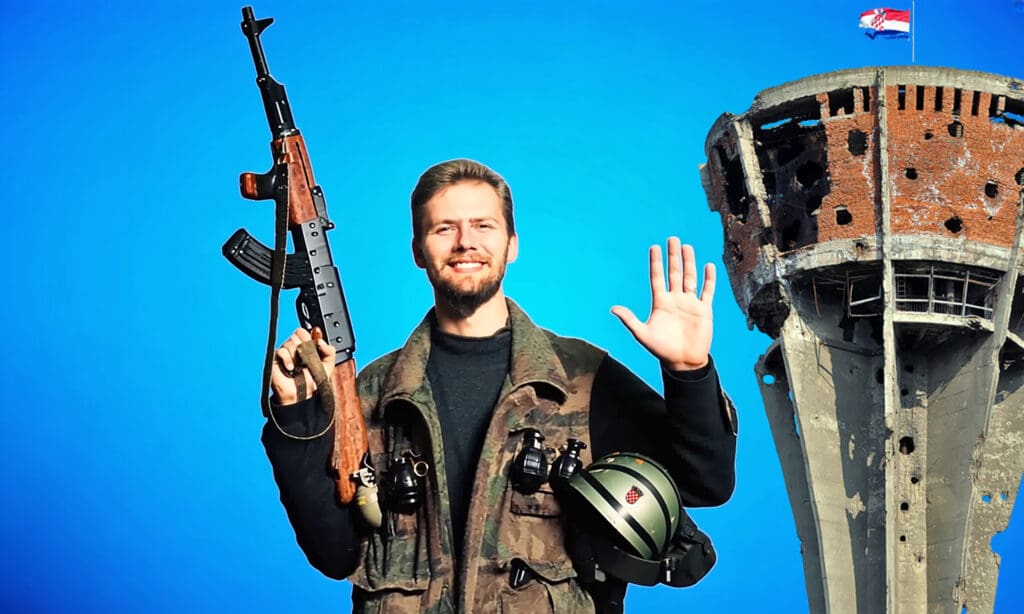
To begin, Mr. Plavšić, can you briefly tell us about yourself and your military journey?
First of all, I warmly greet the esteemed Croats in Australia. My name is Damir Plavšić. I was born in Vukovar in 1969, where I completed both elementary and high school. After serving in the Yugoslav army, I enrolled in veterinary school and moved to Zagreb in 1989. After the massacre of 12 Croatian policemen in Borovo Selo on May 2, 1991, it became clear that war with the Serbs was imminent. In early June 1991, I passed my last exam in the second year of veterinary school and immediately headed to Vukovar, where I voluntarily joined the city’s defence.
On August 25, 1991, my late comrade Robert Janić and I destroyed the first tank in the Battle of Vukovar, the second tank destroyed in the Homeland War. We consider that date—August 25, 1991—as the beginning of the general assault by rebel Serbs and the Yugoslav army on the city of Vukovar.
During the Battle of Vukovar, I first fought on the bloodiest frontline—Sajmište. After our position “Desna Supoderica” fell on November 5, 1991, I continued fighting at “Priljev,” and finally in Borovo Naselje until November 20, 1991, when we, the surviving commanders, made the decision to surrender the defenders and civilians.
After surrendering, all males aged 14 to 84 were taken to Serbia and placed in concentration camps. I was first taken to the Serbian concentration camp in Stajićevo, near Zrenjanin in Vojvodina (Serbia). After a month and a half, I was transferred to the Niš concentration camp and then, after two months, to the Sremska Mitrovica concentration camp.
After spending nearly six months in three Serbian concentration camps, I was exchanged in Nemetin on March 27, 1992. After the exchange, I went to Zagreb, where my mother and younger brother were waiting. At that time, we still didn’t know whether my father, Ivan Zvonimir Plavšić, was alive or where he was.
The very next day after arriving in Zagreb, I resumed my studies in the third year of veterinary school and was given accommodation in a student dormitory, where I stayed for the next few years until marrying my wife. We then moved into a rented apartment. In the meantime, I learned that my father had been killed by Serbs along with Siniša Glavašević in front of a large hangar at Ovčara, and their bodies were thrown into a mass grave with other wounded people from the Vukovar hospital. We buried my father’s remains in Zagreb at the beginning of 1998.
Today I am retired and actively engaged: I perform my plays and screen the film Battle for Vukovar throughout Croatia and the world. I write books and produce films about the defense of Vukovar and what Vukovar is like today. All of this is so our people never forget the heroic battle for Vukovar and the Homeland War.
My books about the defence of Vukovar can be purchased directly from me or on Amazon, and my films can be viewed on my YouTube channel (Damir Plavšić – BITKA ZA VUKOVAR).
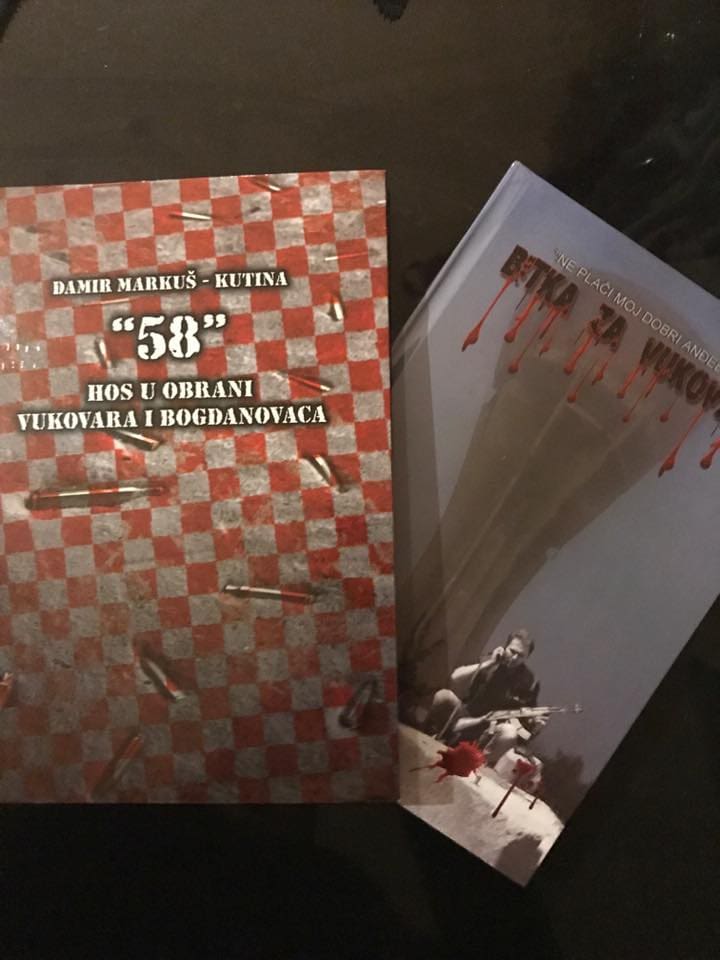

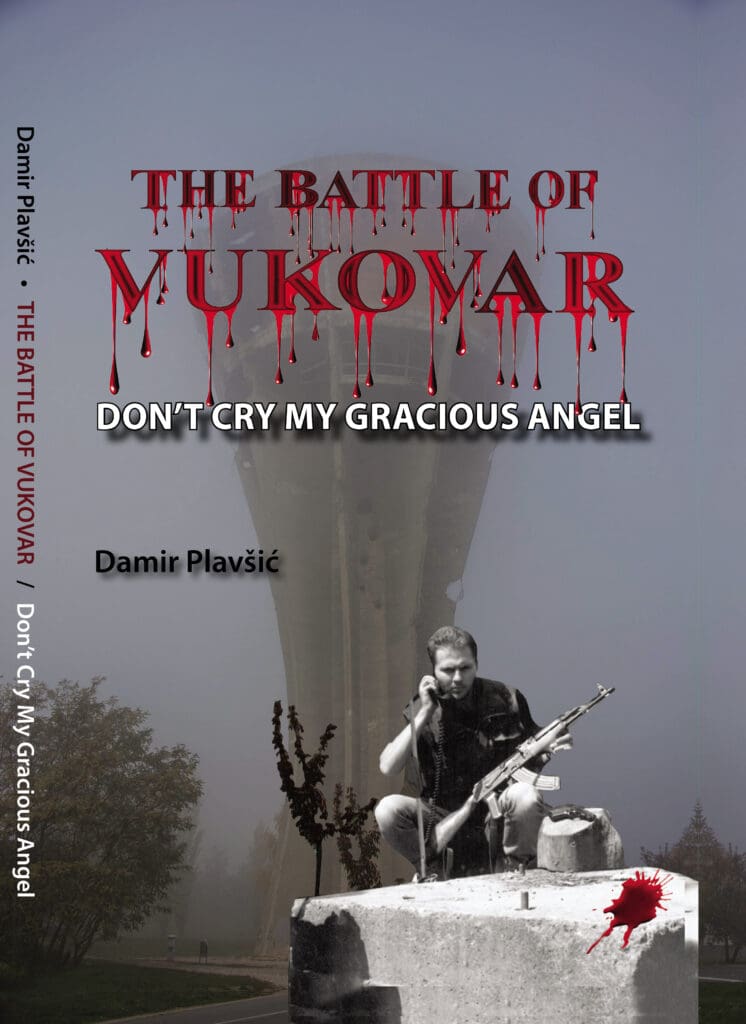
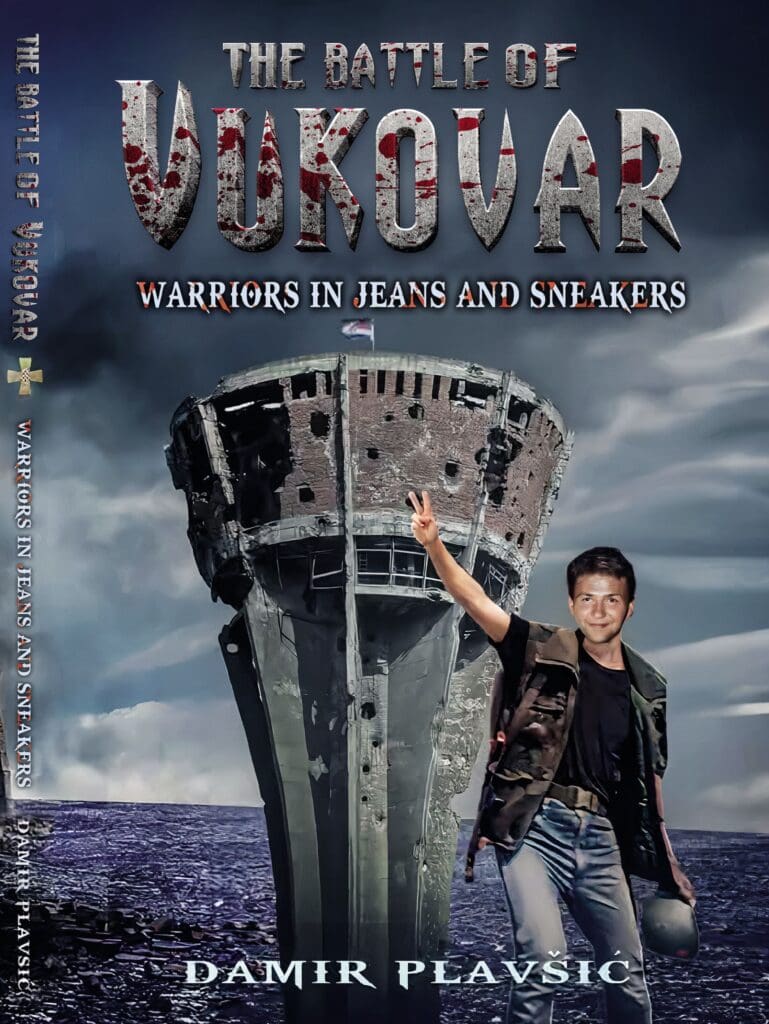
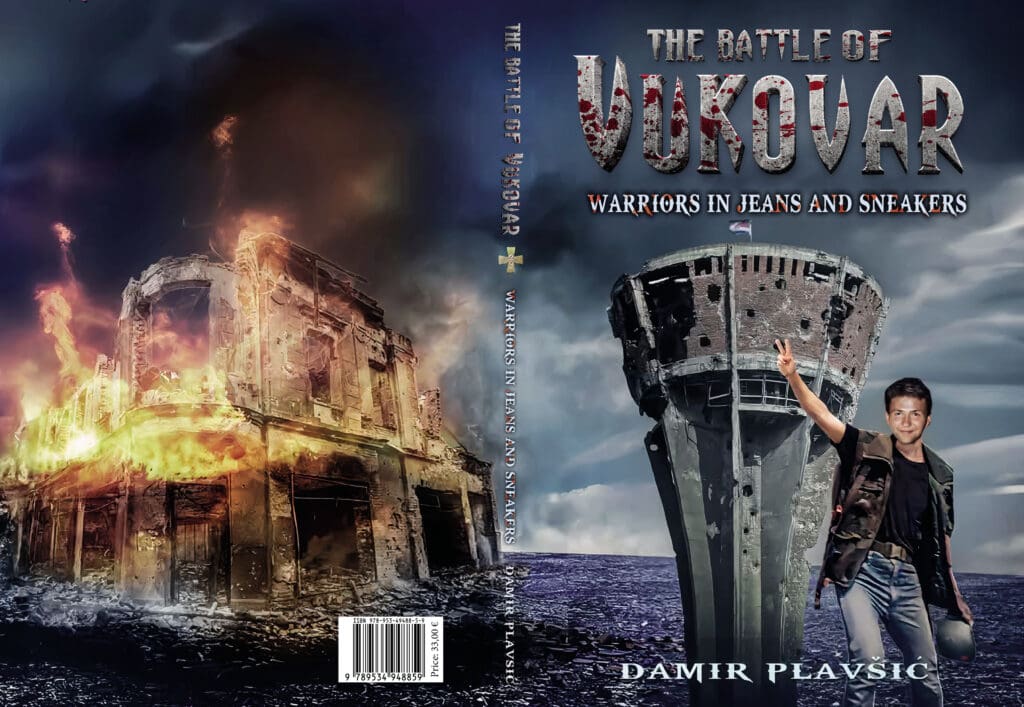
‘Vukovar: Where Innocence Ends and War Begins’
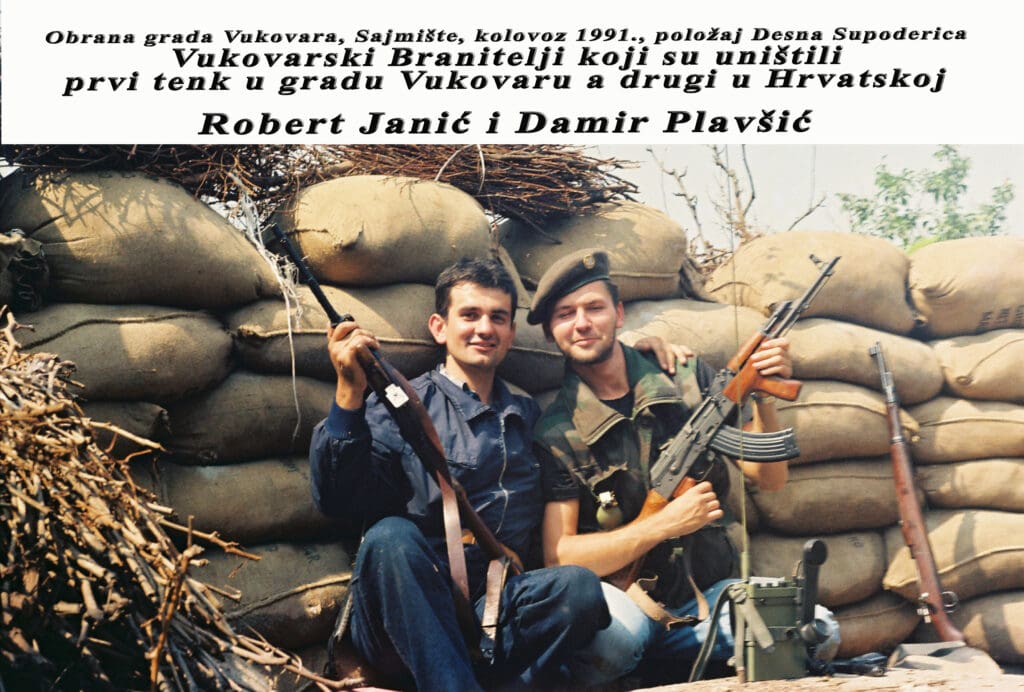
How did you personally experience the Battle of Vukovar, and how did it shape you as a person?
If you recall, the Yugoslav army had seized all weapons and equipment from our republic’s forces (Territorial Defense of the Republic of Croatia), so we Croats initially had no arms to confront the combined Serbian and Yugoslav military forces. In Vukovar, we also lacked adequate weaponry, and we defenders were not trained soldiers but semi-armed civilians wearing jeans and sneakers. Opposing us stood a well-armed, equipped, and trained Serbian army with access to every kind of weapon and an unlimited supply of ammunition. They had over a thousand tanks and armored vehicles, aircraft, boats, helicopters, hundreds of artillery and rocket systems. We had old hunting rifles, a few semi-automatic or automatic rifles, some dynamite, and limited ammunition.
To return to your question: we Croats are a peace-loving people, Catholics and believers, and we live according to Christ’s teachings, respecting and loving our fellow man regardless of religion or ethnicity. However, the Serbs are mostly non-believers, and many of them still carry incredible hatred toward the entire Croatian nation. During the war, Serbs genuinely believed they were doing a righteous deed by killing us Croats, convinced that we were all “Ustaše”…
For us defenders, it was a huge shock to encounter such overwhelming hatred during battle. That’s when we abruptly realized that we had to kill the enemy soldier—because if we didn’t, he would kill us and the civilians we were protecting with our lives. War shaped us in a negative way because we had to become killers in order to survive and save lives. Our Catholic faith and prayer helped us not to become beasts like the Serbs but to remain human and preserve lives even amidst evil.
From Battlefield to Stage

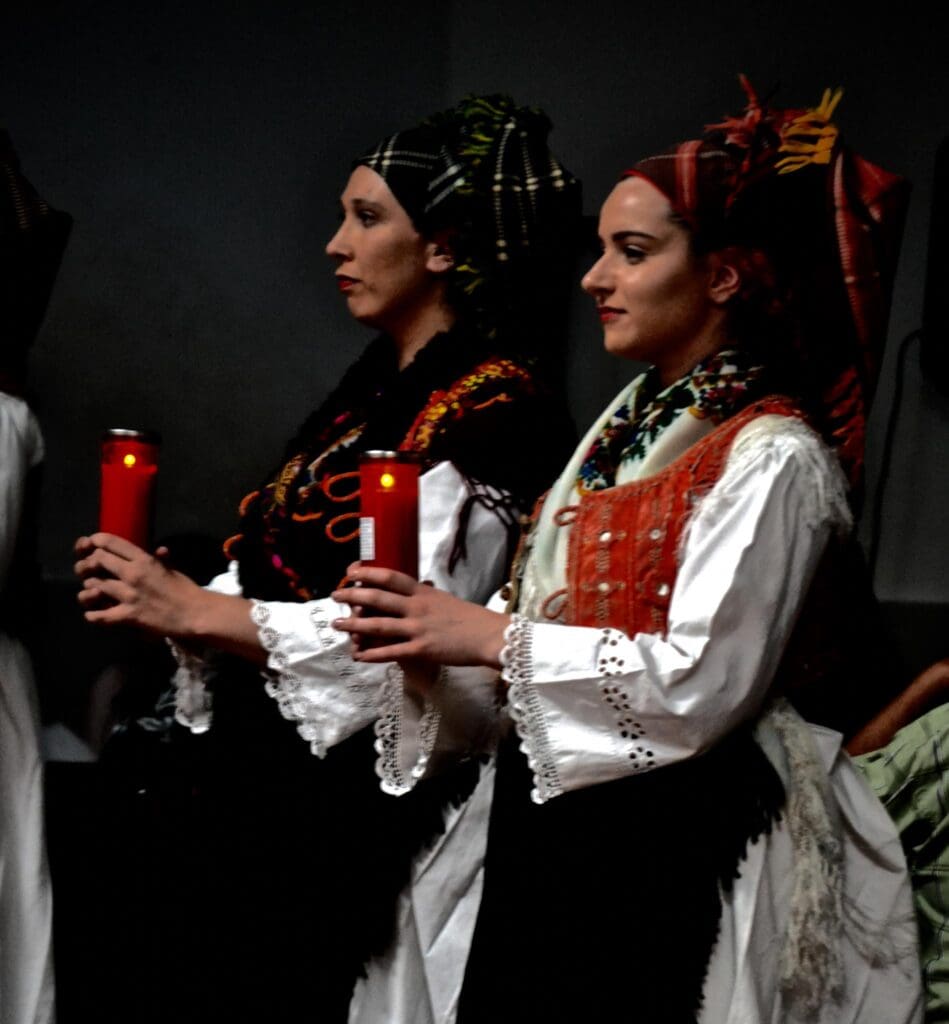


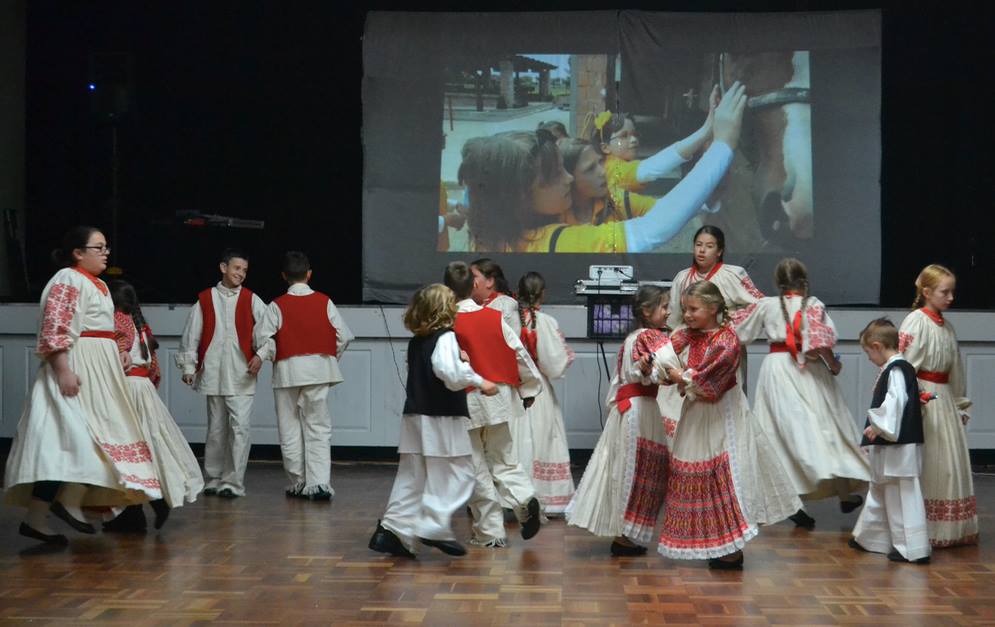

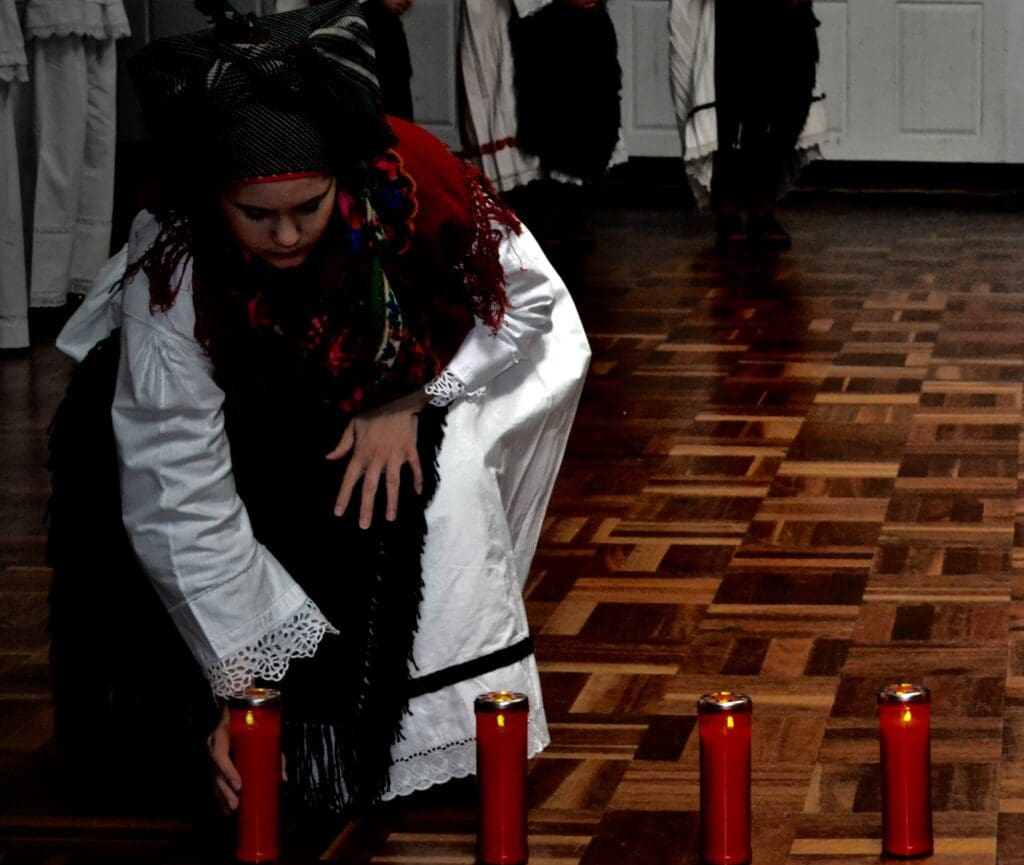
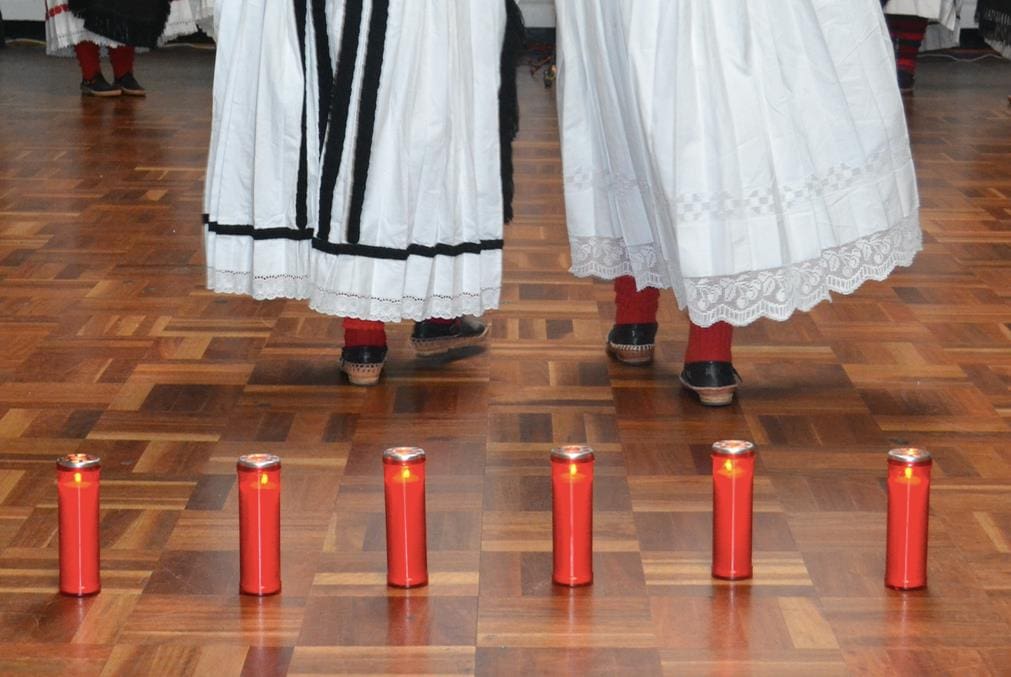
You visited Australia in 2017. What motivated you to present your musical-theatrical performance The Battle for Vukovar there?
My main motivation for coming to Australia and promoting my film The Battle for Vukovar and the musical-theatrical spectacle The Flame of Vukovar’s Light was to share, through film and performance, the recent history of the Croatian people and the creation of a free and independent Croatia during the Homeland War—especially with young Croats in Australia. It was also important that, following the film, I gave a short lecture. As one of the 200 surviving Vukovar warriors, I shared the truth about the city’s defence and the Serbian concentration camps.
How did the Australian audience react to the performance? Did you expect such emotion and interest?
In 2017, I toured Australia and New Zealand with my show The Flame of Vukovar’s Light, performing in Perth, Sydney, Melbourne, Wollongong, Geelong, Adelaide, Fremantle, and Auckland. Unfortunately, attendance at the Vukovar Night events, during which I performed, was quite low because many people had never heard of me. Despite that, I didn’t lose faith that young Croats in Australia want to learn the history of their people.
I hope someone from Australia will take interest and invite my comrades and me to visit again—especially as there are fewer and fewer of us Vukovar warriors alive. According to our commanders’ estimates, only about 200 of us remain.
The performance has a strong multimedia component. Can you tell us more about how you combined music, visuals, and narration to tell the story of Vukovar?

After writing my books about the Battle of Vukovar, I thought about how to present them to children and young people, considering that they rarely read books today. They are visual learners interested only in short, dynamic, and engaging videos. Based on that, I filmed three movies and directed the musical-theatrical performance The Flame of Vukovar’s Light. The central piece of the performance is my film The Battle for Vukovar, enhanced with participation from folklore groups, child actors, and a ceremony of bringing in, blessing, and spreading the flame of Vukovar’s Light. It also includes lighting, sound, and scent effects that elevate the experience.
How does this performance help preserve the memory of the Homeland War, particularly among youth and the diaspora?

Through my performance and musical-theatrical spectacle, I tell the story of Vukovar before the war, during its defence, and what it’s like today after reconstruction and the return of life to the city. I’m glad that the show attracts great interest, especially from children and youth, because it’s dynamic, engaging, and educational. It’s especially impactful when, after the show, surviving Vukovar defenders give a brief talk about the city’s defence—giving young people the opportunity to meet real Heroes of Vukovar.
The show has been performed 226 times in cities and towns across Croatia and around the world (USA, Australia, New Zealand, Canada, South America, Germany, Austria, Switzerland, and Bosnia & Herzegovina). It has received tremendous attention and praise from audiences of all ages. Around 10,000 performers have participated so far (folklore groups, choirs, orchestras, drama groups, etc.), and over 102,000 people have seen the performance.
The podcast Eye to Eye with the Heroes of Vukovar—to whom is it dedicated? Who is your target audience?
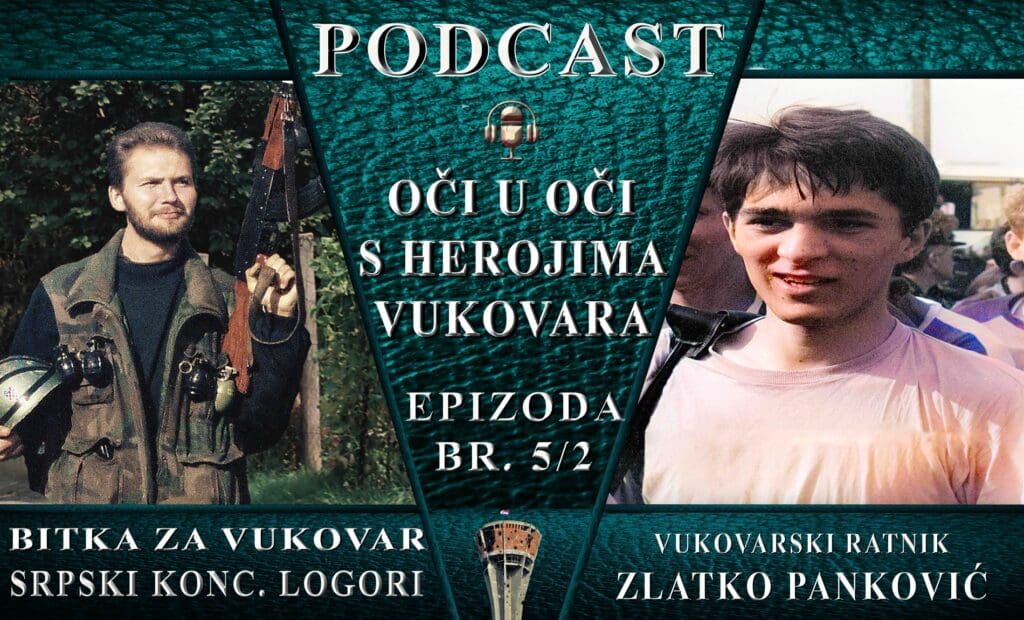
It’s been 34 years since the Battle of Vukovar, and over the years, some individuals have begun to fabricate stories about the city’s defense to glorify themselves and elevate their roles above other defenders. Many true Vukovar warriors are deeply upset about these individuals. That’s why I launched the podcast Eye to Eye with the Heroes of Vukovar – THE TRUTH about the City’s Defense. In this podcast, I invite real Heroes who speak the truth and have never publicly told their stories before. Their testimonies challenge the false narratives of others.
The podcast is published on my YouTube channel (Damir Plavšić – BITKA ZA VUKOVAR) and includes English subtitles for those who don’t speak Croatian fluently. https://www.youtube.com/@bitkazavukovar
It’s important to note: telling the truth about the defence of Vukovar is the most valuable legacy we surviving Vukovar warriors can leave to Croatian youth once we are gone. Everything I do, I strive to do for free—because only the truth matters, and the truth must live on after us.
Which interview has been the most emotional or difficult for you to record?
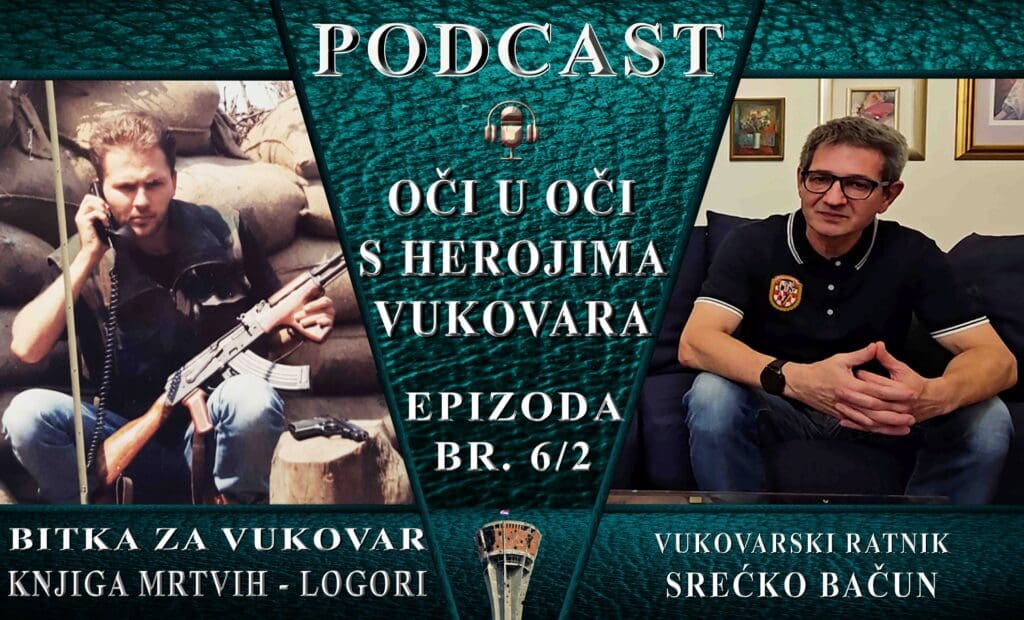
Everything my guests say is deeply emotional for viewers—especially those who didn’t experience the war or imprisonment in Serbian concentration camps. Every episode is heartbreaking. For us Catholics and believers, hearing about Serbian hatred toward Croats, killings, torture in the camps… it’s all shocking.
Personally, it was hard to listen to the story of 18-year-old Zlatko Panković, a regular Vukovar fighter, who was sentenced to death by firing squad after a false accusation that he had personally killed 41 Serbian children in Borovo Naselje. It was also painful to hear him talk about the funeral of General Blago Zadro, who wasn’t awarded a single decoration.
Watch that episode: https://www.youtube.com/watch?v=vTjr2GDqAdI
It was also extremely difficult to hear how HTV journalist Srećko Baćun was tortured in the Velepromet camp—how Serbs stabbed his legs with knives and then shot him in the knee “so he wouldn’t escape,” or how he was forced to watch as they castrated a tied-up man with a knife and then slit his throat.
Watch that episode: https://www.youtube.com/watch?v=Q-6cakfHOyM
The Flame of Vukovar’s Light: A Living Memorial
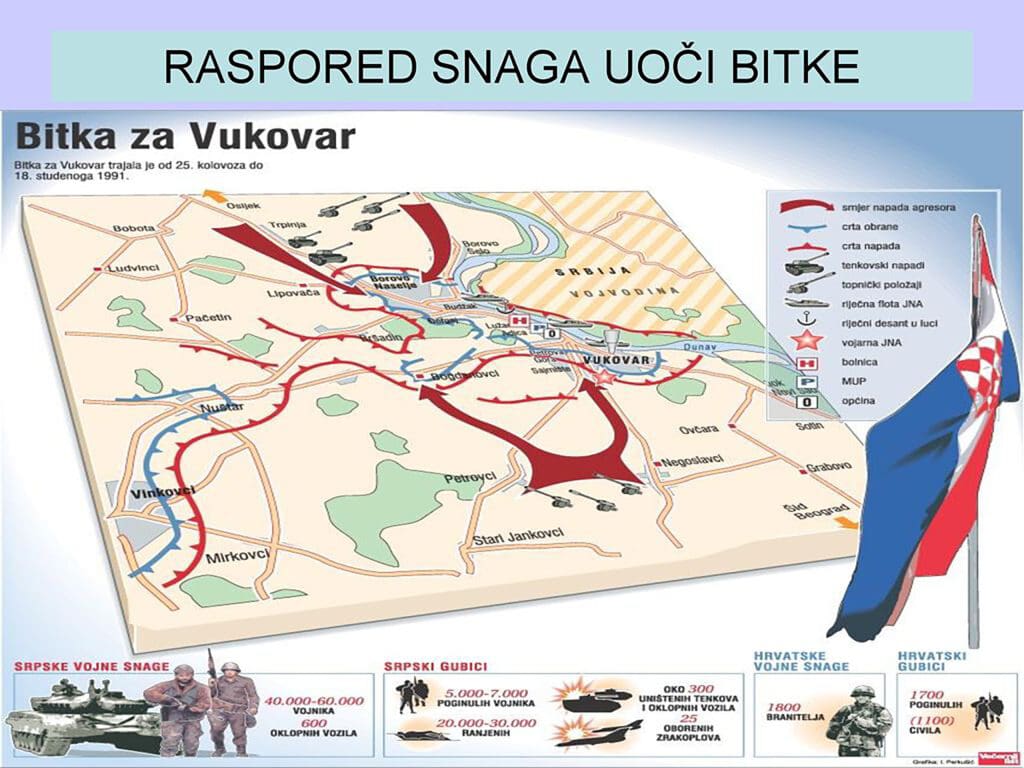
You also produce a documentary series Vukovar’s Secrets. What is it about?
Vukovar is a small town located at the base of the Fruška Gora hills. Beneath the city is a network of secret tunnels and buried cellars unknown even to many Vukovar residents. Most of these tunnels were built by the Austro-Hungarian army after the expulsion of the Turks, while some were built by the Turks and local citizens for storage and wine.
These tunnels were crucial in 1991 for defending the city and saving civilian lives, as around 2,430 women, children, and elderly people lived in them for three months. Today, the tunnels are deteriorating due to neglect, and the elderly who know their locations are dying out. I took it upon myself to film them for two reasons: to urge the mayor and the Ministry of Culture to preserve them, and to document their stories for historical truth.
We’re currently searching for the entrance to a tunnel destroyed with dynamite by partisans. It runs from Vukovar to Ilok, and we believe the remains of about 350 Croats and 50 German soldiers are buried there.
In the Vukovar’s Secrets series, I document tunnels, underground cellars, bunkers, ruins, and shelters.
Watch Season 1:https://www.youtube.com/playlist?list=PL2qmDLA-E8un25EH8PAKF0TvH9tmzr2Cy
Watch Season 2:https://www.youtube.com/playlist?list=PL2qmDLA-E8ukN_hE3JdIvjYneuPeZfdfa
What do you want viewers to take away from each episode?
My intention is that Croats learn something new from each of my films—about the history of our people, about the Battle of Vukovar, about the city of Vukovar throughout history, and about the Vukovar of today. I also hope all my films serve as motivation to preserve the objects I document from decay—because you never know if another war might break out, and whether we’ll need those underground tunnels again…
Reaching the Youth: Education Through Experience
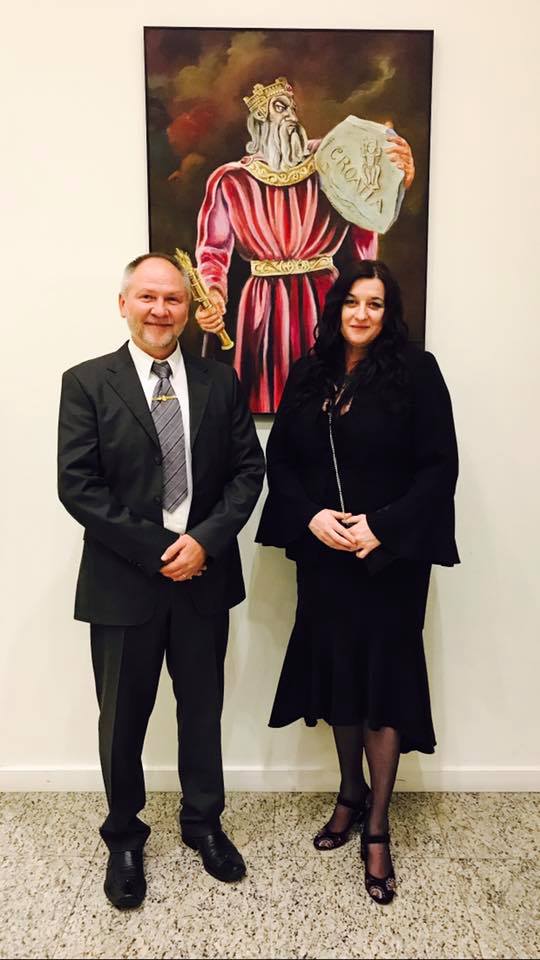
Do you think there is enough discussion today about Vukovar and the Homeland War among young people?
Unfortunately, in most primary and secondary schools in Croatia, students don’t get the chance to properly study the Homeland War. The topic of the “Homeland War” only comes up in June—both in primary and secondary schools—and by then the school year is practically over, grades are already finalized, and the remaining time is spent on grade corrections and various school activities.
Sadly, because most schools don’t have time to properly cover the lesson on the Homeland War, many students can’t even name two Heroes of the Homeland War, and they know next to nothing—or only a little—about the war, mostly just what they’ve heard from their parents.
It is also disheartening that, 34 years after the start of the Homeland War, students in primary and secondary schools still do not read a single book about the war as required reading—even though 2,439 books about the Homeland War have been published so far.
So I ask the Prime Minister and the Minister of Science and Education: Is it really possible that out of 2,439 books about the Homeland War, not a single one is considered good enough to be assigned to students as school reading, especially when students are reading books about World War I, World War II, and German concentration camps?
What message would you like to send to the younger generations of Croats, both in the homeland and in the diaspora?

My message is very simple:
Children and young people—learn the history of the Croatian people and be proud of your Homeland, Croatia, and the courage and heroism of our people throughout history (the defence of Gvozdansko, the defence of Siget, the defence of Vukovar…). Also, preserve your songs, folk customs, and especially your Catholic faith. Love your own and respect others.
To all of you, dear Croats in Australia, I send heartfelt greetings from the Homeland and I hope we will see each other at least once more in Australia—with my new film The Battle for Vukovar and the musical-theatrical spectacle The Flame of Vukovar’s Light.

